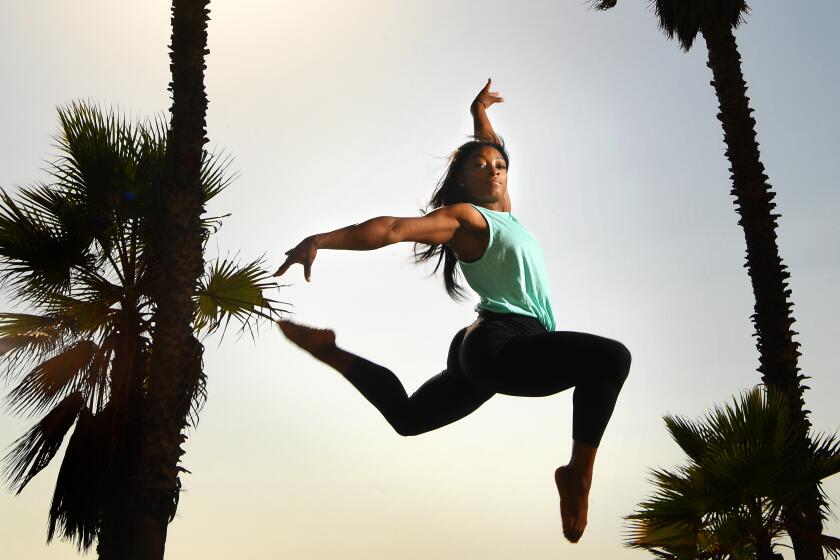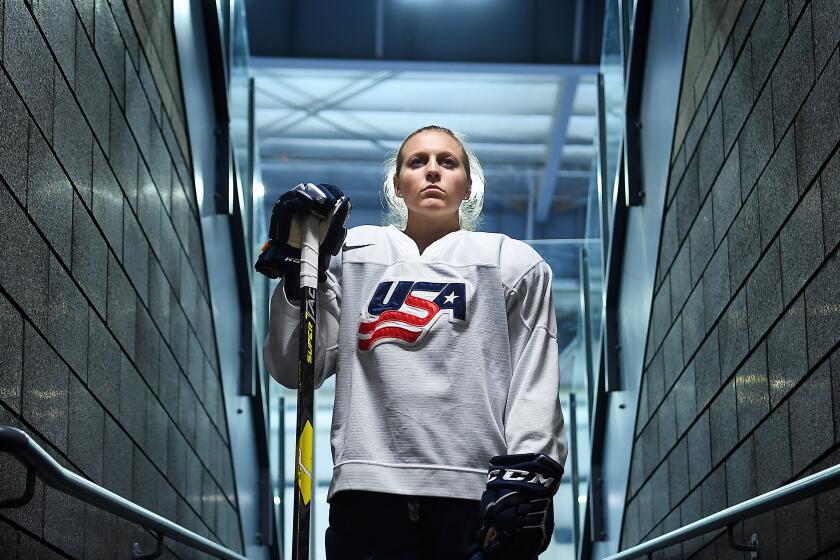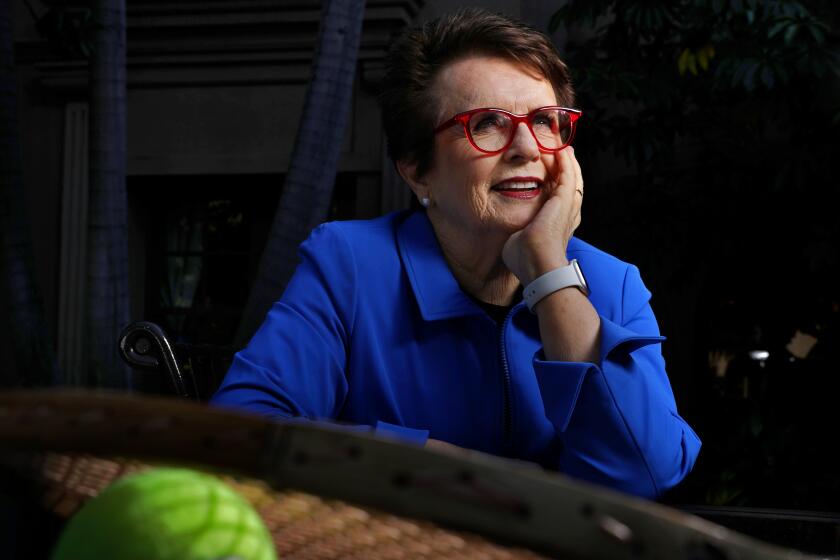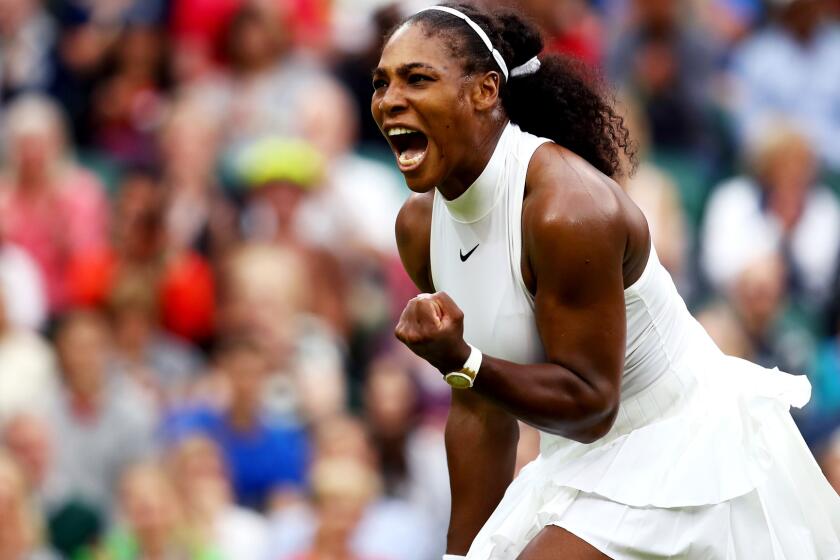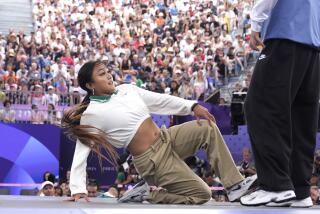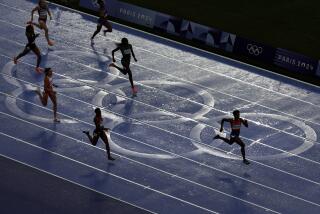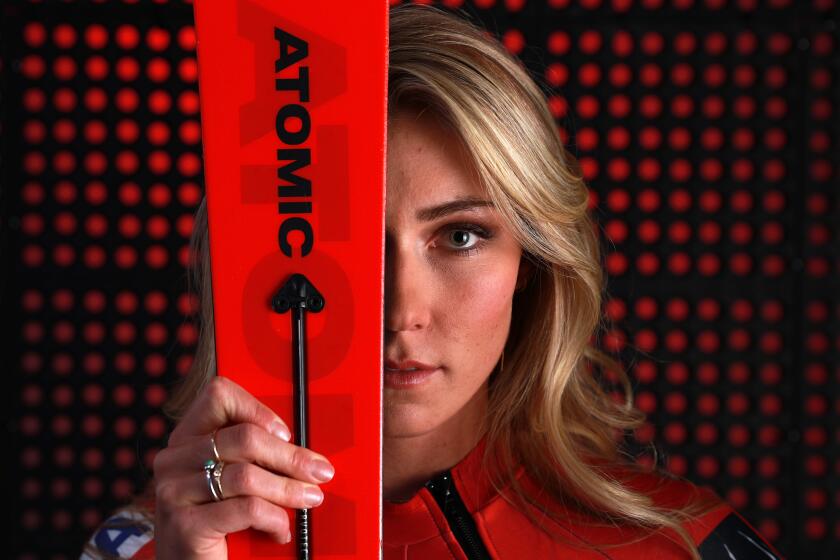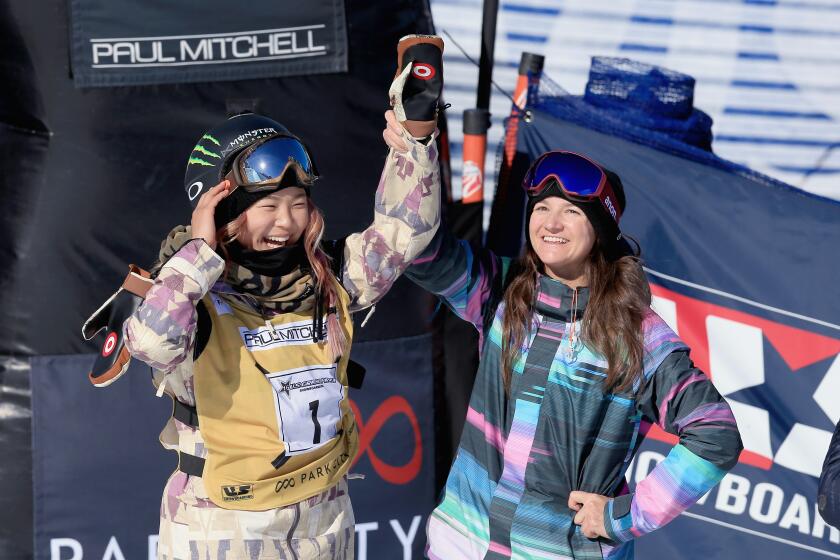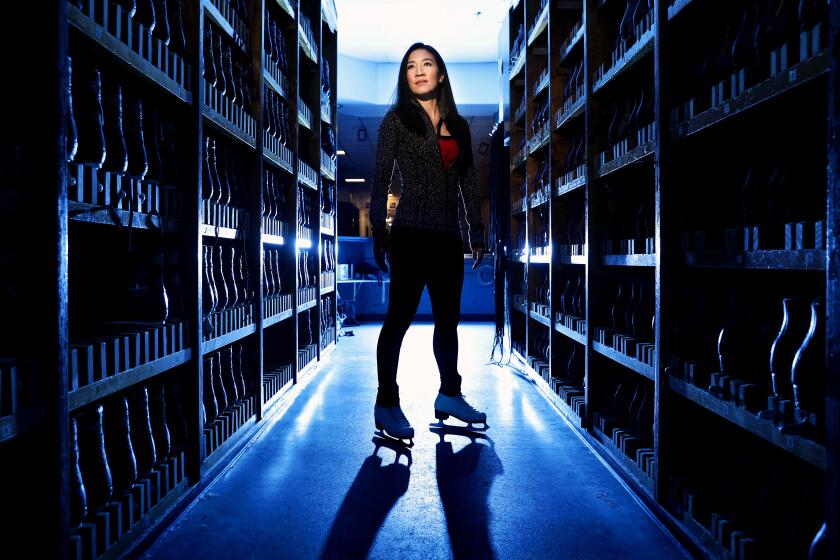A unique moment in history? ‘Women athletes are doing what needs to be done’
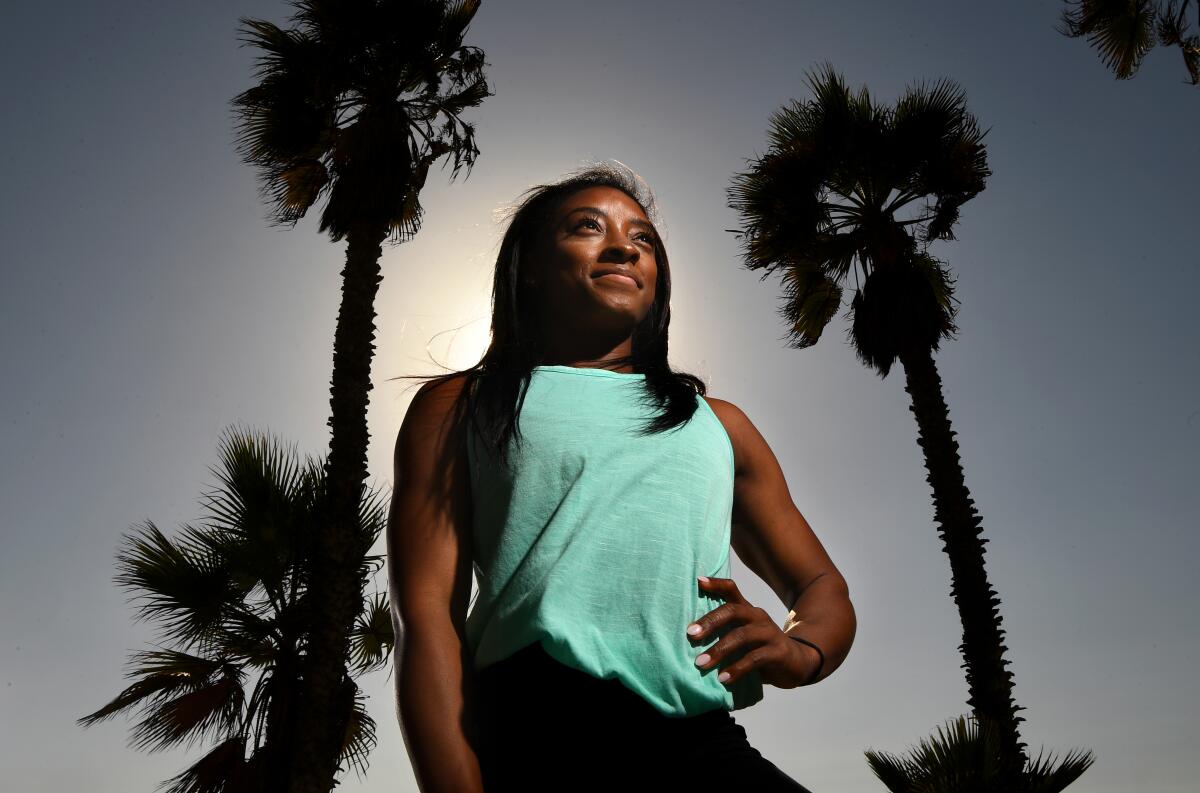
- Share via
The greatest gymnast in the world felt broken inside, too frightened to tell the truth. Years passed before Simone Biles revealed that she had been molested as a girl.
“The more I try to shut off the voice in my head the louder it screams,” she wrote on social media. “I am not afraid to tell my story anymore.”
Simone Biles became America’s most decorated gymnast — male or female — in 2019 when she won her 24th and 25th medals at the world championships.
With that announcement in the winter of 2018, Biles joined scores of victims who came forward in the Larry Nassar sexual abuse scandal. She also took her place in an emerging, defiant generation of female athletes.
The U.S. women’s soccer team has filed a class-action lawsuit against its national federation, demanding the same level of support that goes to the men. Track star Allyson Felix, after giving birth to a daughter, has campaigned for less-famous runners who lose sponsorship money when they take leave for pregnancy.
Speaking out, she said, “is about finding the courage and the confidence.”
Nearly 50 years after the enactment of Title IX, which sought to end discrimination on the basis of sex, female athletes still face significant barriers. They lag behind men in participation rates at the youth level, according to a recent study by the Women’s Sports Foundation. They struggle to pursue careers in professional sports, coaching and administration.
The new generation is pushing back.
“There is something unique about this moment in history,” said Cheryl Cooky, an associate professor at Purdue who has written extensively about gender and sports. “Women athletes are doing what needs to be done. They are advocating for their rights.”
As the effort continues, The Times asked a sample of players, coaches and administrators to discuss the pressing issues of the day.
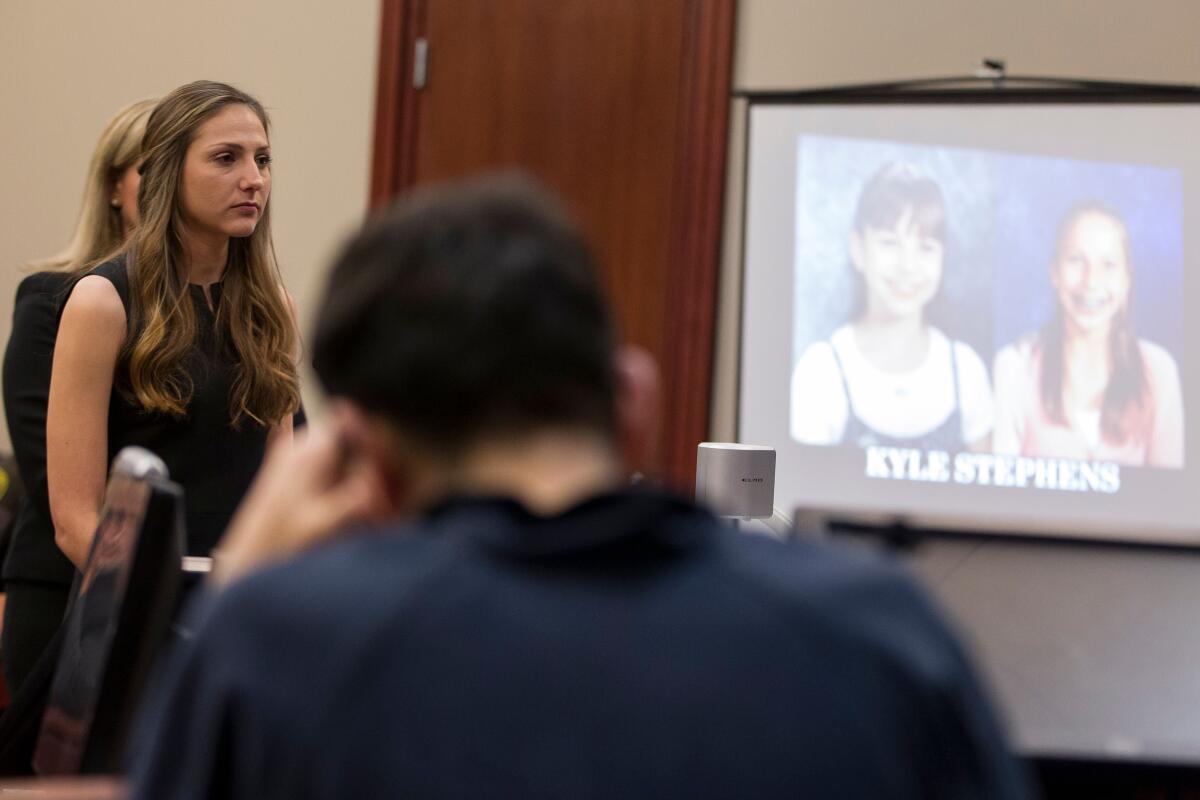
SEXUAL ABUSE
Larry Nassar, the disgraced sports doctor who pleaded guilty to abusing young athletes under the guise of providing treatment, is expected to spend the rest of his life in prison. It was during his sentencing that Biles summoned the nerve to go public.
“I went through a whirlwind of emotions during that time,” she said. “It’s not easy.”
Since then, much has changed.
A pastor’s daughter and humble by nature, Allyson Felix counts her blessings, not her accolades.
Facing pressure from Congress, USA Gymnastics and the U.S. Olympic & Paralympic Committee have overhauled their leadership. Officials also created a watchdog — the U.S. Center for SafeSport — that, despite early criticism, has continued working to protect young athletes.
Biles sees another important step. It has to do with shedding light on abuse.
“Holding that to myself was really tough,” she said. “But once I spoke out about it, it was kind of like a weight off my shoulders.”
The American gymnast, who won a record 25th medal at the world championships last fall, hopes for an athletic culture that supports victims, giving them confidence to report molestation. Transparency, she believes, is essential to rehabilitating her sport.
“I understand it’s scary, especially after everything came out,” she said. “But I think slowly but surely we’ll get there.”
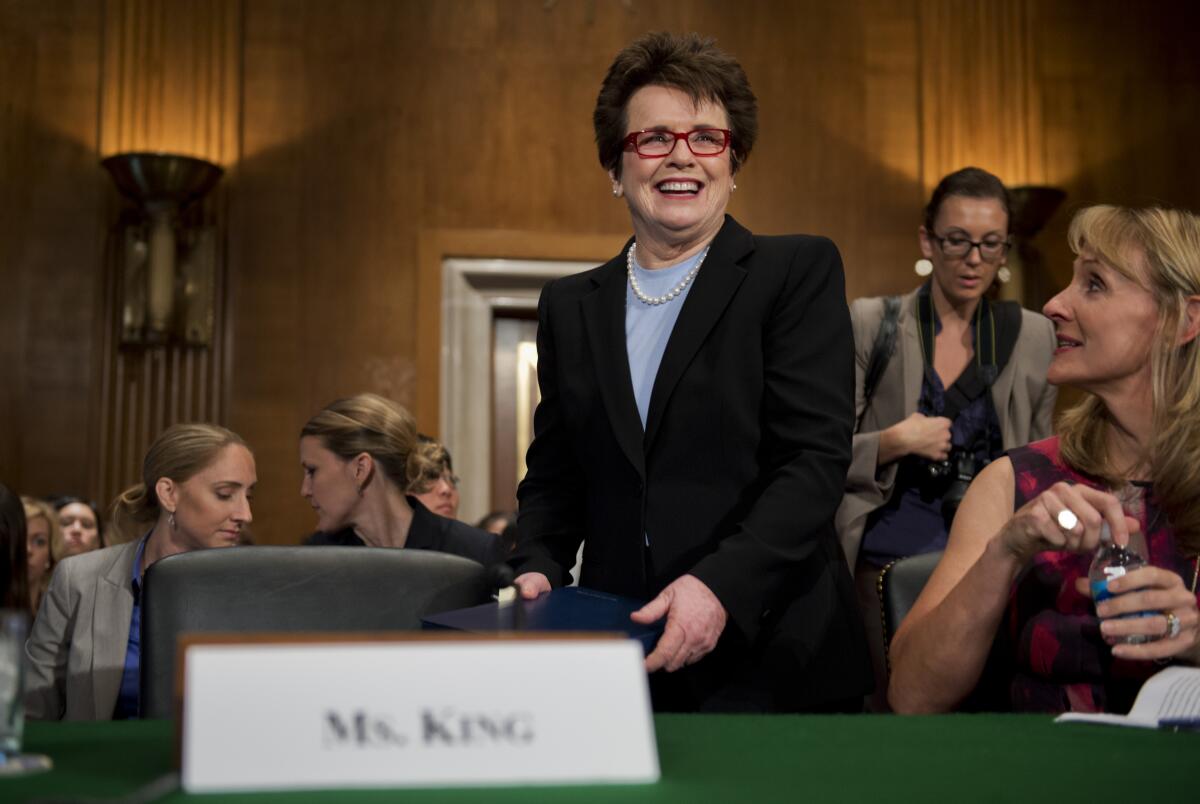
TITLE IX COMPLIANCE
While sexual abuse has dominated the headlines, there is a longer-running story about the battle for equality.
In the simplest terms, Title IX — as part of the Education Amendments of 1972 — strives for “proportionality.” If half the student body is female, there should be a corresponding percentage of athletic opportunities. High schools and colleges also can comply by showing improvement toward that goal.
Nearly 50 years after Congress passed Title IX, female athletes are still scrambling for a fair shot in the male-dominated world of sport. In hockey, top Americans and Canadians train with their national teams part-time; the rest of the season, they have only a small pro league that offers twice-a-week practices, weekend games and thin salaries.
The law has produced significant gains, but the Women’s Sports Foundation says girls still lag behind boys by as much as 10% in overall participation on youth teams. In college, young women get disproportionately fewer opportunities than men at 87% of NCAA schools.
“We’re still not at an equitable level,” said Sarah J. Axelson, a senior director at the foundation.
Numbers are only part of the problem. The foundation has called on schools to better educate staff.

“The idea is not just to have it on paper but to have it fully functional,” said Karen Issokson-Silver, vice president of research and evaluation. “Title IX coordinators are not always familiar with the regulations in their entirety.”
Trained administrators can be more proactive in assessing their athletic programs, advocates say, and that can lead to more of the opportunities girls and young women want.
“Look at what’s happening at the grass-roots level,” Axelson suggested. “What sports are becoming more popular?”
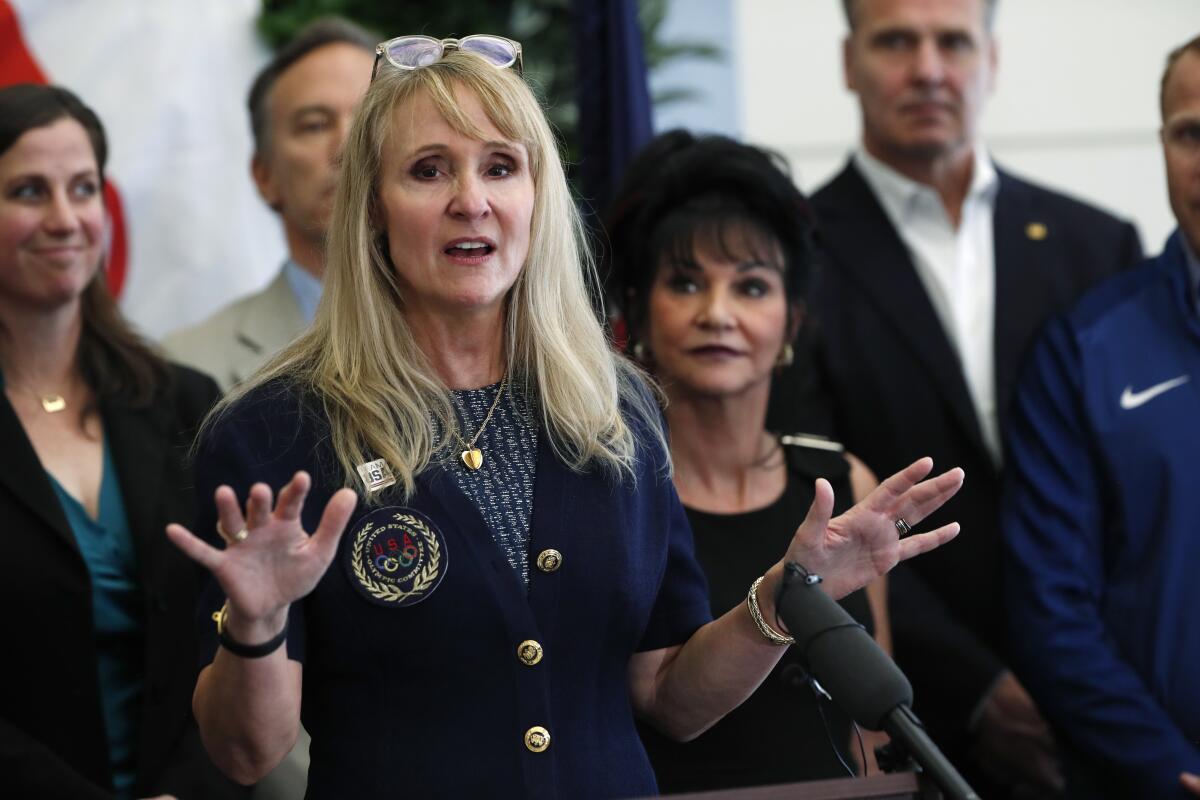
CHOICE
When it comes to satisfying Title IX, school athletic departments often struggle to balance the numbers. It can take three or more women’s teams, in various sports, to equal the roster size of a 100-man football team.
As a former Olympic swimmer turned activist, Nancy Hogshead-Makar worries that some administrators are dodging the law by stuffing too many female athletes into a limited number of sports.
From the tennis courts of Long Beach to Dodger Stadium, tennis legend Billie Jean King has been a pioneer in more ways than one.
For example, a 2019 report by the Omaha World-Herald found that women’s crew teams at colleges across the nation averaged about 63 rowers. At Alabama and Michigan, which have prominent football programs, the totals were 120 and 132, respectively. Other schools had similarly outsized rosters.
“It takes away from women who want to start a tennis team or start a rugby team,” Hogshead-Makar said.
Through her advocacy group, “Champion Women,” she seeks to help female athletes confront this dilemma.
“In order to add a new sport at your school, you have to be willing to sue,” she said. “Let me get this straight — you need 18- and 20-year-olds who are willing to sue?”
Girls and women are more likely to participate if their schools offer a wider variety of teams, advocates believe, and the ramifications extend beyond athletics.
“The major predictor of whether or not a woman gets into a STEM career is whether or not she had a team sport experience,” Hogshead-Makar said. “It changes their life trajectory.”

COACHING
It was last spring when Muffet McGraw, the women’s basketball coach at Notre Dame, declared she would never hire another male assistant.
Her reasoning?
“We don’t have enough female role models,” she said. “We don’t have enough visible women leaders. We don’t have enough women in power.”
Game Changers: Trailblazers
The Times’ profile series of women who are pioneers in sports.
The passage of Title IX prompted a surge in female coaches, with women leading 90% of women’s college teams, according to the Tucker Center for Research on Girls & Women in Sport at the University of Minnesota. But that number has fallen to about 40% over the past decade.
“It starts at the youth level, the 6-year-old soccer players,” said McGraw, who has maintained an all-female staff since 2012. “Somebody’s dad is usually the coach. Girls learn from an early age that men are leaders, men are in charge. They’re socialized right away.”
Counteracting this dynamic could require a change in hiring practices at all levels. Employers also need to accommodate female coaches who, unlike their male counterparts, must balance career with having children.
McGraw would like to see athletes recruited for coaching internships when they retire from competition.
“There are a lot of qualified women, a lot of women playing in the WNBA or overseas,” she said. “How do you start? You need experience.”
LEADERSHIP
Coaching never interested Gloria Nevarez. After playing basketball at the University of Massachusetts, she went to law school, then gravitated toward sports administration. The rules of the game soon became apparent.
When college athletic departments need to fill an executive position, they often look for someone they know, a name already in the “mental Rolodex.”
Game Changers: NextGen
The Times’ profile series of women in sports who continue the fight for equality.
“It’s really about networking,” she said. “Are you in that close circle that gets invited to play golf? Do you get invited to watch games in the luxury suite?”
Such access was scarce for women as Nevarez worked her way up, moving from job to job in sports administration until becoming commissioner of the West Coast Conference in 2018. She sees a need for more women — and minorities — in leadership positions.
“You have athletic departments of 15- to 20-odd sports of both genders,” she said. “Our mission is to serve the athletes and you can’t do that if your administration isn’t diverse.”
Like others, Nevarez supports proactive hiring, especially for jobs involving finance and marketing that “often provide a path to the leadership chair.”
“There has to be a concerted effort,” she said. “Having more women in senior leadership opens things up.”
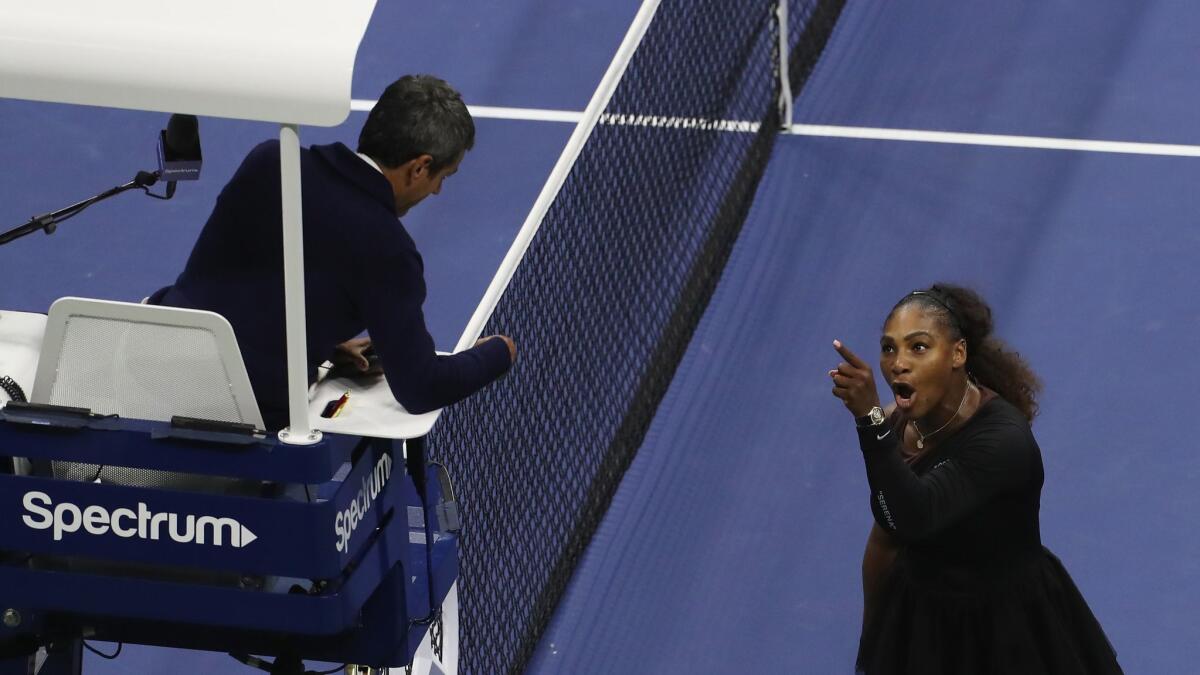
MEDIA COVERAGE
The prevailing wisdom goes like this: Female athletes attract media attention commensurate to the quality of the product they put on the field. But in a landscape dominated by the NFL and NBA, experts worry about a wide discrepancy.
Television coverage of women’s sports declined from 1989 through 2014, representing only 3.2% of news and highlight shows, according to an independent study cited by the Women’s Sports Foundation.
Newspaper staffs include disproportionately few female sportswriters.
Fans have watched Serena Williams grow up before their eyes. Now she is watching her daughter grow up while maintaining the drive to win. The balance isn’t so easy.
“Without fair media coverage, women’s sports role models are invisible,” the foundation stated, adding that “girls and women may conclude that there is little cultural value assigned to their participation in sport.”
At the Tucker Center, director Nicole LaVoi recalls the NBA struggled for decades, shadowed by more popular sports. Television continued to broadcast games until the league “grew a fan base and created a market.” She believes the same could happen for women.
Daily broadcasts of last year’s Women’s World Cup drew an estimated 1 billion viewers. Olympic networks have drawn sizable audiences by emphasizing women’s gymnastics and figure skating.
Tone is equally important, with researchers finding that when women’s sports do get covered, too much attention is paid to physical appearance and femininity.
“I’m not watching the Minnesota Lynx [of the WNBA] because they are sexy,” LaVoi said. “The point is, they are amazing athletes and I’m watching because I like sports.”
Many in the new generation are circumventing mainstream media to interact directly with fans through online platforms such as Twitter, Instagram and Facebook. LaVoi sees a reason to be optimistic.
If female athletes want change, they might have to take matters into their own hands.
“We know that sport reflects cultural and societal trends,” she said. “But, in some respects, sport can lead the way.”
More to Read
Go beyond the scoreboard
Get the latest on L.A.'s teams in the daily Sports Report newsletter.
You may occasionally receive promotional content from the Los Angeles Times.

